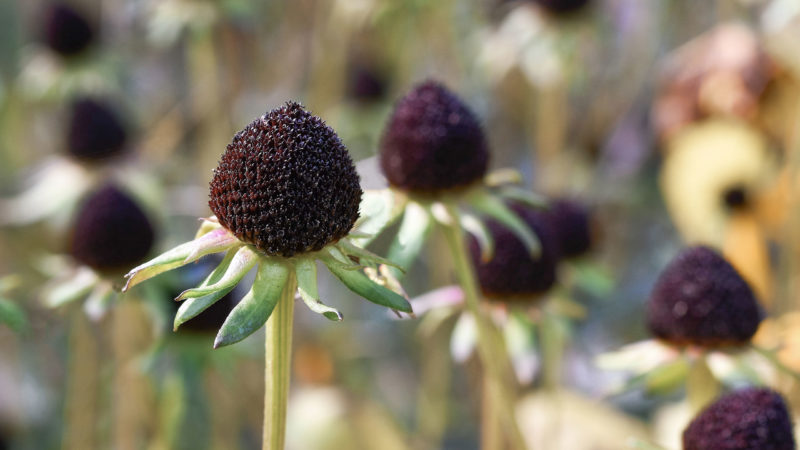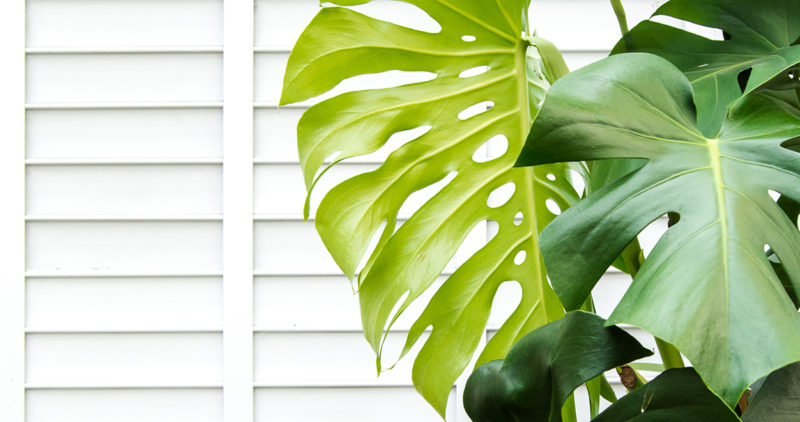
When the weather turns colder, it may seem like there’s not much left to do in the garden. But there are many more beautiful fall days left to spend outside, and Ashley Waltemath, from our Plant Care team, has a few suggestions for what we can do now to get our gardens prepared for winter and on track for a healthy spring.

For the vegetable garden, Ashley recommends removing and discarding any spent plants after harvest is done for the year. Fungal spores from common garden diseases like powdery mildew or early blight can overwinter on dead plant material and re-infect new plants the following spring. Damaging insects like squash bugs can also shelter in old vegetable matter, so it’s best to clean it all away. After everything’s tidy again, Ashley suggests spreading a layer of compost on the garden bed. And don’t worry about tilling it in – you can just lay it right on top. Until the ground freezes, earthworms, insects, and other critters will naturally work the material into the soil, improving its structure and adding valuable nutrients for the next season.
While a thorough clean-up is important in vegetable gardens, Ashley recommends that for perennial beds, we leave most of our clean-up until early spring. There are several benefits to letting landscape plants remain in their natural state through the winter. Many perennial grasses and flowers have seed-heads that attract foraging birds and provide winter interest for us. Standing grasses and hollow perennial stems offer important winter shelter for bees and other beneficial insects too. And they collect fallen leaves which act as a natural mulch helping insulate the plants’ roots from rapid temperature fluctuations. Of course, if you have any problematic areas with diseased leaves or branches, you’ll want to remove and discard that material in the fall. Fall is a good time to add compost to the soil in perennial beds too. If you still have a good layer of mulch already put down, just move it to the side before adding the compost, then rake the mulch back over the compost.
If perennial weeds like dandelion or creeping Charlie are a problem in your lawn, broadleaf herbicide applications are especially effective after the first frost. Near-freezing temperatures signal these weeds to prepare for winter by pulling nutrients from the foliage into the roots for storage. Herbicides we apply now will get carried down into the roots at the same time. Just be careful not to get the chemical on perennials, shrubs, trees, and other ornamental plants – the herbicide doesn’t know the difference. At the same time, lawns will benefit from an application of winterizing fertilizer, sometimes called “winterizer.” The grass absorbs the nutrients throughout the winter, strengthening the root system and promoting winter hardiness.
Fall gardening can include planting new trees and shrubs, but sometimes it’s about digging things back up. There’s a group of plants with specialized root systems (technically called rhizomes, corms, or tubers, but collectively called bulbs) that won’t survive our winters. Examples include cannas, dahlias, gladiolus, tuberous begonias, caladiums, and calla lilies. Fortunately, these bulbs can be stored indoors over the winter. Ashley says the process is pretty simple. After frost has knocked back the foliage – but before the ground freezes – carefully dig up the bulbs, and gently shake off any excess soil. Cut off any remaining foliage, then set the bulbs in a well-ventilated space to let their skins toughen up, or “cure”. For most bulbs, curing takes just a few days, but gladiolus bulbs will need a longer time – maybe two or three weeks. After they’re cured, stack the bulbs loosely between layers of newspaper in a breathable container like a paper sack or an open cardboard box. You can also nest your bulbs between layers of sphagnum moss or vermiculite, if you choose. Once you’ve got them arranged in their container, just stash the container in a cool, frost-free place – an attached garage is usually the perfect place – and start planning where you’ll plant them again next spring.
And lastly, Ashley stresses the importance of keeping our landscape plants well-watered through the fall. Good hydration – before the ground freezes – ensures that trees, shrubs, and perennials will continue to thrive in the dry winter winds. This is especially important for evergreens, which don’t go dormant and lose a significant amount of moisture through their foliage during the winter. Ashley says that because cooler temperatures have slowed evaporation, your plants will be well-hydrated with no more than one inch of additional water per week when the weather is dry.
These are just a few of the ways we can get outside to enjoy the fall weather and prepare our landscapes for the next season. If you have any questions about these or other fall gardening activities, just give us a call or stop in – our Plant Care team can help.


